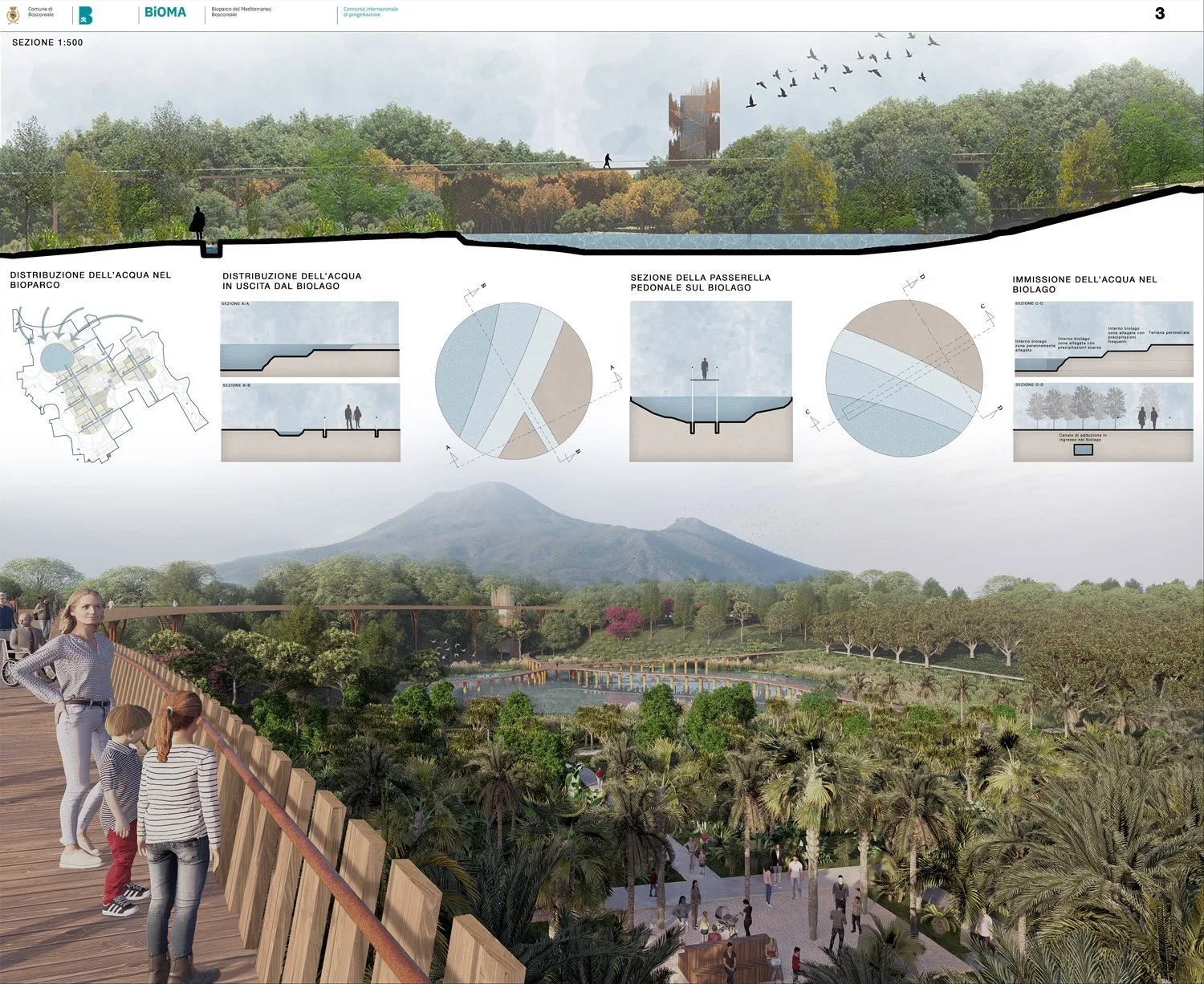Bioma Competition | Boscoreale, Italy
Our project for the Bioma Mediterranean Biopark competition reimagines the landscape as a complex natural, cultural, and social ecosystem, in line with the philosophy of Deep Ecology, which promotes respect and care for the Earth. Our proposal envisions an expansive green space near the Vesuvio National Park—not just as a "lung" for the city but as a shared expression of nature’s spirit, allowing communities to develop a sense of identity rooted in physical places, local values, and practices.
The design prioritizes sustainability and harmony with the environment. We use sustainable materials and introduce structures that are lightweight, removable, or adapted from existing buildings to reduce impact. A ring of woodland surrounds the site, echoing the historic gardens of Pompeii and linking to other green areas nearby. Botanical gardens and research fields reflect the legacy of the Reggia di Portici, building stronger ties between the municipality of Boscoreale and the University of Naples Federico II.
Lead Architect: Lab.I.R.Int. Architettura
Executive Landscape Architect: Landworks Studio
Architecture and nature blend seamlessly. From shaded walking paths and interactive greenhouses to wooded zones and a biolake filled with native and visually striking plants, every element encourages exploration and learning. The biolake, in particular, supports wetland restoration while offering visitors a beautiful visual and educational experience.
The park is equipped with digital tools to guide visitors and highlight its ecological features. A special section is dedicated to growing plants for sustainable building materials—carbon-neutral, biodegradable, and locally sourced—promoting environmental awareness and stewardship.
Design choices respond to the land’s shape, geology, and accessibility. Native Mediterranean plants—some of them historically important or reintroduced—form ecological corridors that help support wildlife in and around the park.
Visitors can experience the park from multiple perspectives, including a canopy walk that offers new views and connects to nearby archaeological sites like Pompeii and Herculaneum. Activity zones include areas for fitness, children’s play, learning, and agriculture.
Features like crater-shaped trails, elevated walkways, and dynamic architecture reflect the region’s volcanic landscape and rich history. Interactive signage and metaverse experiences deepen the educational value, offering a bridge between the physical and digital worlds.
All spaces—from the Metaverse House to research fields—are designed to be flexible and low-impact, allowing for adaptation as technology and community needs evolve. The overall experience is immersive, sensory, and grounded in a profound respect for nature and place.
Circulation
Zones
click below for final boards









